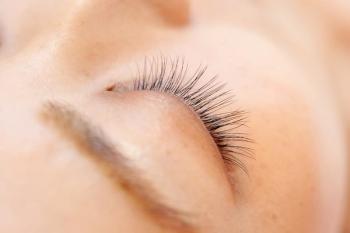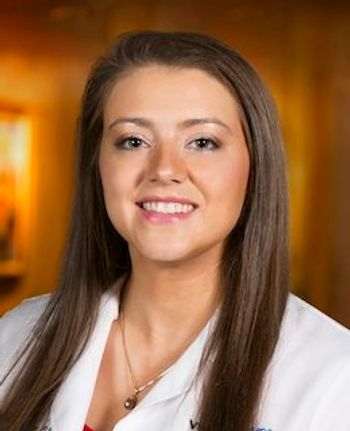
Navigating the wild world of telehealth care in the post-pandemic era
At AOA 2022, Rebecca Wartman, OD, and Harvey Richmond, OD, discuss how eye care practitioners can properly and efficiently establish a telehealth program in their practice.
Reviewed by Rebecca Wartman, OD.
Telemedicine is not a new concept; it has been around for a few decades, but generally restricted to use with patients in rural areas with no or limited health care practitioners.
However, the technology has been forced to take great leaps forward during the COVID-19 pandemic to meet the eye care requirements of patients who were isolated.
As a result, caregivers have entered this “Wild West” phase of this technology, according to Rebecca Wartman, OD, retired from private practice in Asheville, NC, and Harvey Richman, OD, in private practice in Manasquan, NJ.
In optometry, telehealth provides synchronous/asynchronous technologies and non-face-to face telehealth (virtual check-ins, E-visits, and telephone and telehealth services) for the eye, adnexa, visual system, and related systemic health care services, according to the American Optometric Association (AOA).
However, these capabilities do not replace the doctor-patient face-to-face interactions, i.e., telemedicine does not in and of itself replace the standard of care.
Specifically, refractive tests, photographs, screenings, etc. do not replace direct contact between the doctor and patient because of inherent limitations in the technology. Optometrists are bound to abide by their respective state laws.
The goals of establishing a telehealth program are staff efficiency, patient compliance and convenience, improved access to care, streamlined schedule, addressing the downtime issues, and examining the value of the system to patients/staff/practice.
Considerations for use of telehealth
These include access to care, chronic and post-acute care management, triage for emergencies, and many communication channels.
The bottom line for patients who love the technology is the convenience that it provides, i.e., 51% listed convenience as the number 1 benefit. This was followed closely by safety at 46%, quality of care by 30%, and their condition was covered by the telehealth visit for 28%.1
During the post-COVID period, the rules about telehealth are in flux regarding who will be allowed to offer particular services, when the services will be allowed, what payers will participate, and what payers will exclude eye care. The rules likely will tighten.
“However,” Wartman commented, “telehealth is here to stay.”
Once the dust settles, she advises that everyone be educated on benefits, including the staff and patients. In addition, options should be provided that include telemedicine visits, virtual check-ins, and portal access for any questions they may have.
Office staff can be involved in scheduling, patient intake, ensuring the timing of the visit and patient set-up, connectivity, and what to do when connectivity fails.
Other considerations are that patients must be prioritized for telehealth, educated with a script, and converted to telehealth.
Wartman underscored the importance of maintaining a professional office appearance during telehealth visits. Perhaps most importance is having a back-up plan when the technology fails.
The clinically appropriate care provided during telehealth visits include glaucoma compliance, follow-up of patients with dry eye and acute infections, and check-ups of patients with age-related macular degeneration, among others.
Dos and don’ts of telehealth
Given the nature of the evaluations, physicians cannot conduct deep anterior segment and posterior segment examinations, refractions, and intraocular pressure measurements
Physicians can evaluate the anterior segment and the pupils to a certain degree, the extraocular muscles, and collect history symptoms; evaluation of the visual fields is uncertain.
Patients also can conduct a home visual acuity test with appropriate instructions regarding lighting and distance to the chart.
Patients also can perform Amsler grid self-testing at home and measure their intraocular pressure using the iCare Tonometer (iCare Finland OY), the Sensimed Triggerfish contact lens (Sensimed) to monitor glaucoma.
Other devices, such as Smartphone retinal imaging systems and portable vision, color, visual fields, and contrast sensitivity devices are also available to facilitate examinations.
Other testing abilities include the pupils, eye movements/alignment, penlight anterior segment evaluations using a camera, patients selfie images, and medical discussions that include patient and family questions. Physicians should document the length of the visit.
Coding and billing
There are a plethora of scenarios to consider for coding and billing. This AOA site is a valuable link for specific information: https://www.aoa.org/optometrists/tools-and-resources/medical-records-and-coding.
"Telehealth will become more common in our practices and needs to be properly and effectively implemented,” Wartman concluded.
Reference:
1. https://www.jdpower.com/business/healthcare/us-telehealth-satisfaction-study.
Rebecca Wartman, OD: rhwartman@gmail.com
Newsletter
Want more insights like this? Subscribe to Optometry Times and get clinical pearls and practice tips delivered straight to your inbox.







.png)


